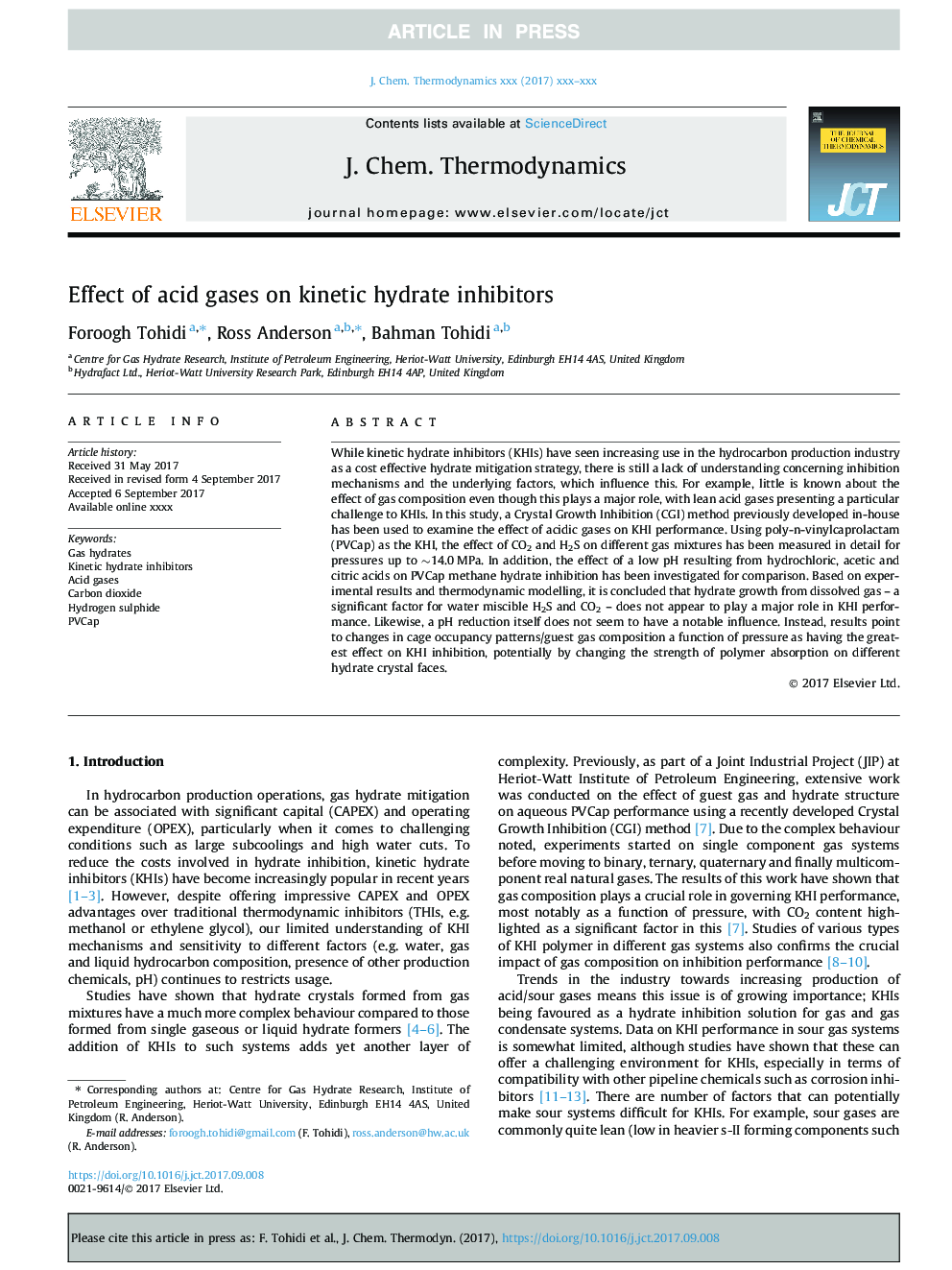| Article ID | Journal | Published Year | Pages | File Type |
|---|---|---|---|---|
| 6659904 | The Journal of Chemical Thermodynamics | 2018 | 9 Pages |
Abstract
While kinetic hydrate inhibitors (KHIs) have seen increasing use in the hydrocarbon production industry as a cost effective hydrate mitigation strategy, there is still a lack of understanding concerning inhibition mechanisms and the underlying factors, which influence this. For example, little is known about the effect of gas composition even though this plays a major role, with lean acid gases presenting a particular challenge to KHIs. In this study, a Crystal Growth Inhibition (CGI) method previously developed in-house has been used to examine the effect of acidic gases on KHI performance. Using poly-n-vinylcaprolactam (PVCap) as the KHI, the effect of CO2 and H2S on different gas mixtures has been measured in detail for pressures up to â¼14.0Â MPa. In addition, the effect of a low pH resulting from hydrochloric, acetic and citric acids on PVCap methane hydrate inhibition has been investigated for comparison. Based on experimental results and thermodynamic modelling, it is concluded that hydrate growth from dissolved gas - a significant factor for water miscible H2S and CO2 - does not appear to play a major role in KHI performance. Likewise, a pH reduction itself does not seem to have a notable influence. Instead, results point to changes in cage occupancy patterns/guest gas composition a function of pressure as having the greatest effect on KHI inhibition, potentially by changing the strength of polymer absorption on different hydrate crystal faces.
Related Topics
Physical Sciences and Engineering
Chemical Engineering
Chemical Engineering (General)
Authors
Foroogh Tohidi, Ross Anderson, Bahman Tohidi,
